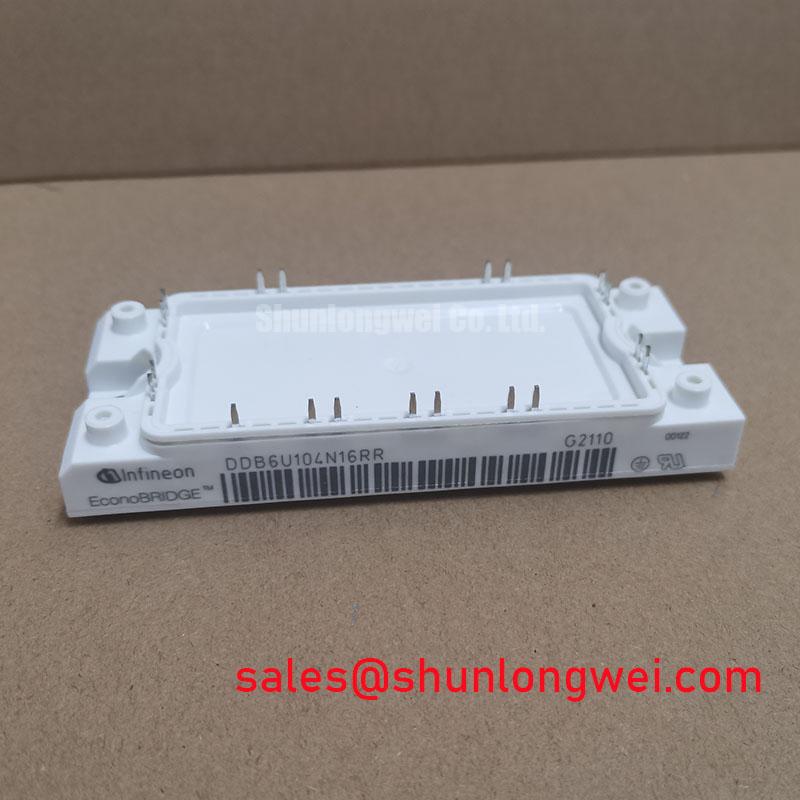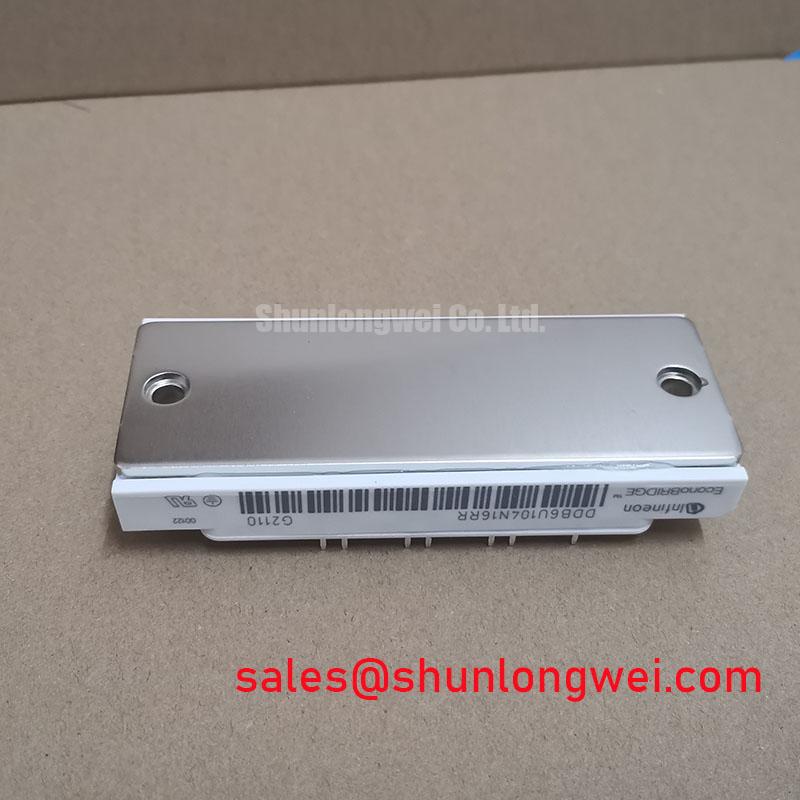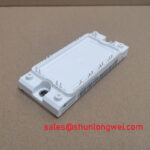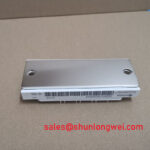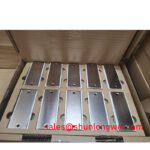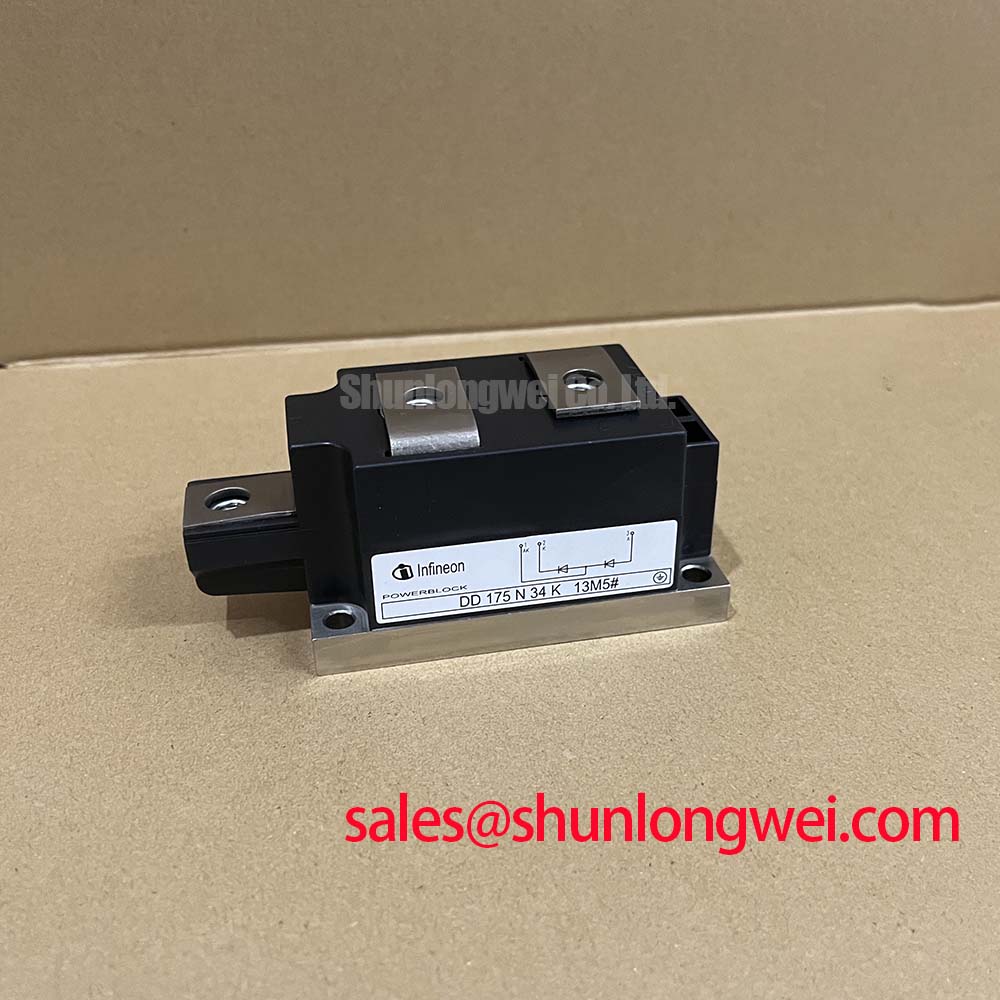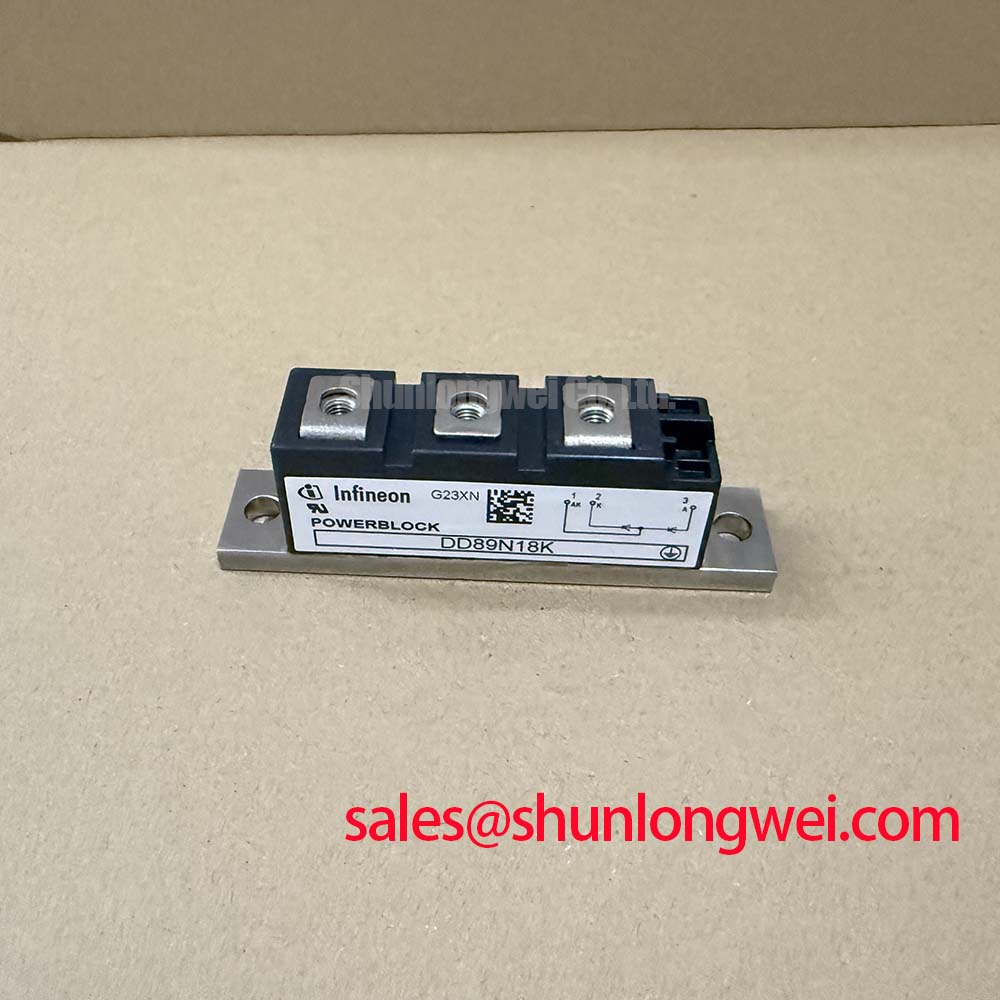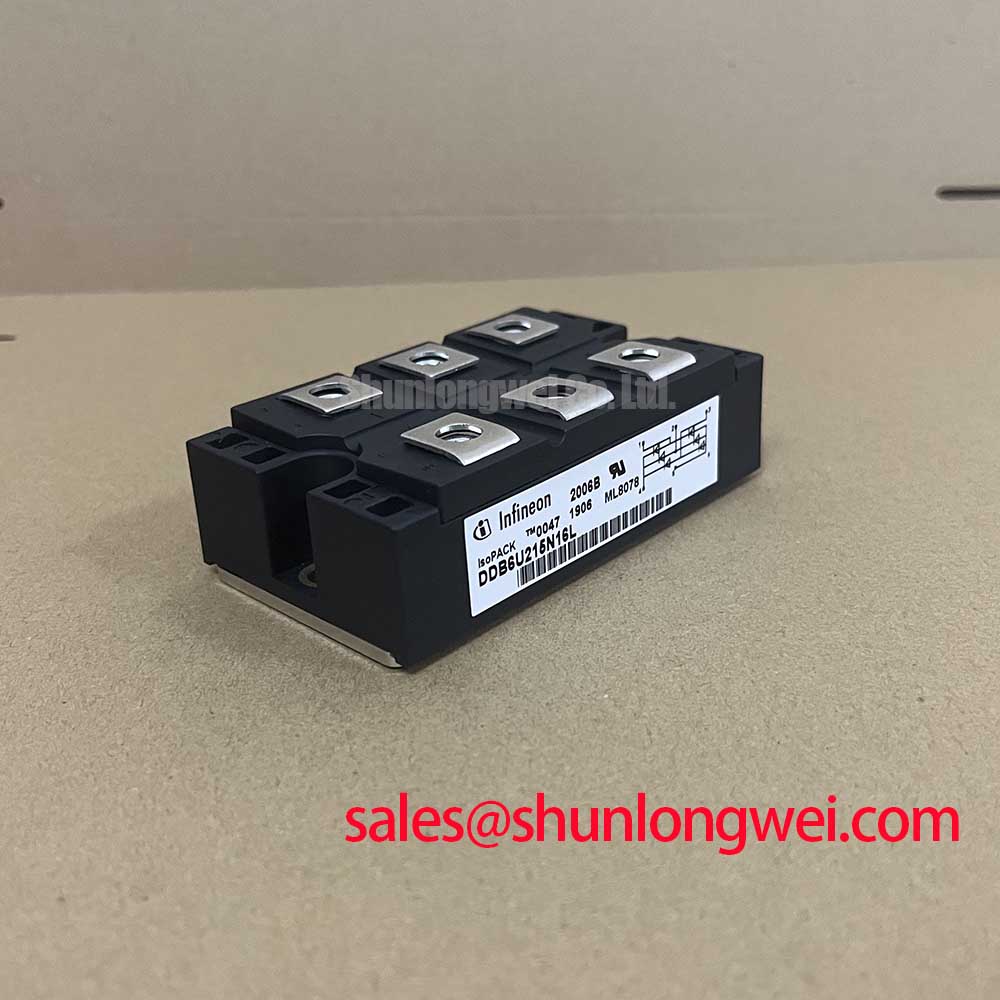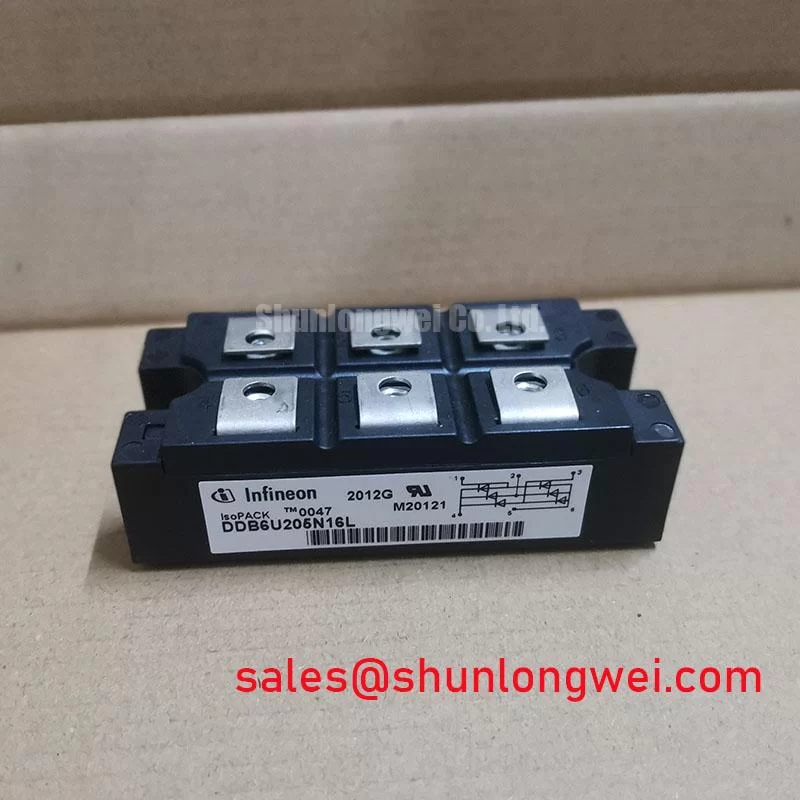Content last revised on November 17, 2025
DDB6U1-04N16RR Product Page
DDB6U104N16RR: High-Integration Diode Bridge Module for Robust Industrial Power Conversion
The DDB6U104N16RR is an EconoBRIDGE™ module engineered for high-reliability power conversion, integrating a full three-phase diode bridge, a brake chopper IGBT, and an NTC thermistor into a single compact package. With its 1600V blocking voltage and 104A RMS forward current capability, this module delivers a robust front-end solution for demanding industrial drives and power supplies. Its integrated design simplifies thermal management and enhances power density. This module is particularly suited for systems requiring a reliable AC-DC rectification stage combined with dynamic braking capabilities, such as high-inertia motor drives, where efficient energy dissipation during deceleration is critical.
Application Scenarios & Value
System-Level Benefits in High-Inertia Drive Systems
The DDB6U104N16RR is engineered to provide a robust and integrated solution for the front-end of variable frequency drives (VFDs), servo drives, and industrial power supplies. Its primary value lies in combining three essential functions—AC-to-DC rectification, regenerative energy braking, and temperature monitoring—into a single, thermally efficient module. This integration directly addresses the engineering challenge of designing compact, reliable, and cost-effective power conversion systems.
A key engineering scenario where this module excels is in controlling high-inertia industrial loads, such as large fans, pumps, or conveyor systems. During deceleration, the motor acts as a generator, feeding energy back into the DC link. The DDB6U104N16RR's integrated brake chopper IGBT provides a controlled path to dissipate this regenerative energy through an external resistor, preventing DC bus overvoltage faults. This capability is critical for ensuring operational stability and protecting downstream components like inverters and capacitors. The module's Al2O3 substrate ensures low thermal resistance, facilitating efficient heat extraction from both the rectifier diodes and the chopper IGBT, a crucial factor for maintaining reliability in demanding start-stop cycles. For systems that may not require an integrated brake chopper but demand similar voltage and current ratings, the related TDB6HK124N16RR can be considered.
- Variable Frequency Drives (VFDs): Provides a complete front-end rectification and braking solution, simplifying design and assembly.
- Uninterruptible Power Supplies (UPS): Ensures a reliable DC source from a three-phase AC input, with the NTC providing critical thermal feedback.
- Industrial Power Supplies: Offers a high-density, integrated component for robust power conversion stages.
- Soft Starters: Facilitates controlled rectification in motor control applications, enhancing overall system reliability.
Key Parameter Overview
Decoding the Specs for Integrated Power Designs
The technical specifications of the DDB6U104N16RR are tailored for high-performance industrial applications. The parameters below highlight its capacity for robust power handling, thermal stability, and integrated functionality, which are essential for modern power electronic systems.
| Parameter | Value | Engineering Implication |
|---|---|---|
| Rectifier Diode Ratings | ||
| Repetitive Peak Reverse Voltage (VRRM) | 1600 V | Provides substantial voltage margin for operation on 380V to 480V three-phase AC lines, enhancing system resilience against line voltage transients. |
| RMS Forward Current per Chip (IFRMSM) | 104 A (TH = 75°C) | Indicates the module's high current handling capability, suitable for mid-to-high power industrial drives and power supplies. |
| Surge Forward Current (IFSM) | 550 A (t = 10 ms) | Demonstrates high robustness against inrush currents during system startup, reducing the need for oversized external protection components. |
| Brake Chopper IGBT Ratings | ||
| Collector-Emitter Voltage (VCES) | 1200 V | Adequately rated to handle DC bus voltages generated from rectified 480V AC lines, ensuring safe operation during dynamic braking events. |
| Repetitive Peak Collector Current (ICRM) | 60 A | Defines the maximum pulsed current the chopper can handle, directly correlating to its peak braking power capability. |
| Thermal & Mechanical Ratings | ||
| Thermal Resistance, Junction to Heatsink (RthJH) | 0.72 K/W (per diode) | The low thermal resistance, facilitated by the Al2O3 substrate, allows for efficient heat dissipation, which is critical for maintaining long-term reliability and performance. |
| Isolation Test Voltage (VISOL) | 2.5 kV (AC, 1 min) | Ensures high electrical isolation between the power circuit and the mounting baseplate, meeting industrial safety standards. |
Download the DDB6U104N16RR datasheet for detailed specifications and performance curves.
Technical Deep Dive
Analyzing the Impact of Integrated Thermal Management
The DDB6U104N16RR's design centers on delivering thermal reliability through component integration and advanced materials. By housing the three-phase rectifier, brake chopper, and NTC thermistor on a single aluminum oxide (Al₂O₃) Direct Bonded Copper (DBC) substrate, Infineon minimizes the number of thermal interfaces and simplifies the overall thermal design for the engineer. The Al₂O₃ substrate offers excellent electrical isolation while providing a highly effective thermal path from the semiconductor junctions to the heatsink. This construction is crucial because the rectifier diodes and the chopper IGBT often operate under different load profiles. For instance, the diodes experience continuous conduction losses, while the chopper is subject to high-power pulses during braking. The integrated design ensures that heat from both sources is efficiently transferred to a common heatsink, leading to a more uniform temperature distribution and preventing localized hotspots. The inclusion of an on-board NTC thermistor allows for direct, real-time temperature monitoring at a point close to the power devices. This enables the implementation of precise over-temperature protection in the system's control logic, significantly enhancing long-term operational safety and preventing catastrophic failures.
Frequently Asked Questions (FAQ)
What is the primary benefit of integrating a brake chopper into the DDB6U104N16RR module?
The integrated brake chopper simplifies the power stage design by eliminating the need for a separate braking module. This reduces component count, simplifies wiring, minimizes stray inductance, and provides a more compact and cost-effective solution for managing regenerative energy in motor drive applications.
How does the 1600V VRRM of the rectifier diodes benefit my design?
A repetitive peak reverse voltage (VRRM) of 1600V provides a significant safety margin for applications connected to 400V or 480V AC mains. This high blocking voltage capability makes the system more resilient to voltage spikes and transients commonly found in industrial environments, thereby improving overall system robustness.
What is the function of the integrated NTC thermistor?
The integrated NTC thermistor serves as a temperature sensor. It allows the system controller to monitor the module's operating temperature in real-time. This data is critical for implementing over-temperature protection, which can prevent thermal runaway and extend the service life of the module.
Is the DDB6U104N16RR suitable for applications beyond motor drives?
Yes, while it is optimized for motor drives, its robust rectification and high voltage rating make it an excellent choice for the input stage of high-power industrial SMPS, uninterruptible power supplies (UPS), and welding equipment where a reliable three-phase AC-DC conversion is required.
Strategic Considerations for Your Power System
The DDB6U104N16RR embodies a strategic approach to power electronics design, focusing on integration to enhance both performance and manufacturability. By consolidating key front-end functions, this module allows engineering teams to streamline their design process, reduce assembly complexity, and improve the power density of their end-systems. This level of integration is particularly valuable in competitive markets like industrial automation and power conversion, where space, cost, and reliability are critical differentiating factors. Adopting a pre-validated, integrated solution like the EconoBRIDGE™ can de-risk the development cycle and accelerate time-to-market for next-generation power systems.

